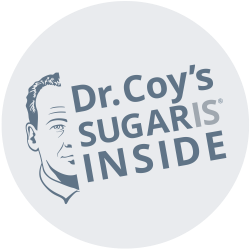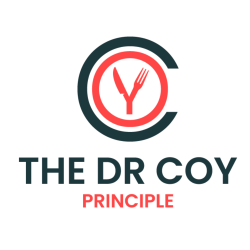HPV and Cervical Cancer
Human papillomavirus (HPV) infections are responsible for over 99% of precancerous cervical lesions, making them a significant threat to public health. Among the many strains of HPV, types 16 and 18 are most common, accounting for more than 70% of cervical cancer cases worldwide.
HPV-related cervical cancer progression is driven by the viral proteins E6 and E7. These proteins undermine the body’s natural defences. E6 damages the tumour-suppressor p53 protein, which typically prevents cancer, while E7 inactivates pRb, another key protein involved in tumour suppression.
Beyond disabling these crucial cancer-fighting proteins, other factors can also fuel the development of cervical cancer, adding to the complexity of the disease.
How Cancer Cells Exploit Glucose: Fuelling Growth
Human papillomavirus (HPV) infections are responsible for over 99% of precancerous cervical lesions, making them a significant threat to public health. Among the many strains of HPV, types 16 and 18 are most common, accounting for more than 70% of cervical cancer cases worldwide.
HPV-related cervical cancer progression is driven by the viral proteins E6 and E7. These proteins undermine the body’s natural defences. E6 damages the tumour-suppressor p53 protein, which typically prevents cancer, while E7 inactivates pRb, another key protein involved in tumour suppression.
Beyond disabling these crucial cancer-fighting proteins, other factors can also fuel the development of cervical cancer, adding to the complexity of the disease.
How Cancer Cells Exploit Glucose: Fuelling Growth
Cells rely on glucose as their primary energy source. Therefore, an increased supply of glucose can expedite the rate of cell proliferation (division and growth of cells). However, cancer cells divide and grow at a much faster rate than regular cells, meaning they demand significantly more energy to sustain their rapid development. To meet this vast demand for energy, cancer cells take full advantage of glucose metabolism.
Regular cells primarily generate energy through a metabolic process called oxidative phosphorylation. In contrast, cancer cells will alter their metabolism to utilise glucose more efficiently, generating energy via glycolysis instead. This alteration is known as the Warburg Effect.
The Warburg Effect enables cancer cells to quickly generate energy and create new cells.
The problem with glycolysis is the lactic acid produced as a byproduct. Normally, pyruvate—generated during glycolysis—is funnelled into oxidative phosphorylation to produce more energy when oxygen is available. In cancer cells, instead , pyruvate is converted into lactic acid, causing it to build up in the tumour environment. This leads to increased acidity, which has been shown to further accelerate tumour growth.
Recent studies reveal that changes in glucose metabolism can promote cancer growth by triggering pathways like PI3K/Akt and mTOR.
When the protein PI3K is activated, it sets off a chain reaction that activates another protein called Akt. Akt exacerbates cancer growth in two key ways:
- It prevents normal cell death, allowing unhealthy cells to linger in the body longer than they should.
- It increases the production of proteins needed for cells to keep dividing.
The mTOR pathway boosts protein production and manages how cells use fats and energy, providing cancer cells with the resources needed to grow quickly. Additionally, mTOR inhibits a process called autophagy, which typically helps the body recycle damaged cell parts. By blocking autophagy, cancer cells are able to evade our bodies’ usual cleanup processes and continue growing.
Together, the PI3K/Akt and mTOR pathways create a deleterious environment that supports the relentless growth of cancer cells. By dismantling the body’s defence mechanisms and rewiring the cells’ energy production, HPV enables infected cells to multiply uncontrollably, eventually leading to cervical cancer.
The Power of Natural Sugar Alternatives in Oncological Nutrition
Understanding how glucose metabolism is altered in HPV-related cervical cancer opens up new avenues for treatment. Researchers are looking into targeting these metabolic pathways to slow down cancer growth or make cancer cells more sensitive to treatment.
For instance, Dr Johannes Coy’s discovery of the TKTL1 gene has greatly advanced our understanding of how classic sugar consumption relates to cancer. TKTL1 assists cancer cells in producing vast amounts of ribose (a sugar), which fuels their growth. Furthermore, TKTL1 exacerbates excessive lactic acid production, which, as mentioned prior, can harm surrounding tissue, and facilitate the spread of cancer cells.
Dr Coy has discovered that limiting glucose consumption challenges TKTL1’s ability to convert glucose into ribose, the building block of new DNA. Depriving cancer cells of glucose will make them more vulnerable to cancer treatments and may help slow the spread of the disease.
At Intelligent Sugar, we see how high blood glucose levels correlate with cancer risk. But we also know that people still crave sweetness every so often. That is why Dr Coy’s natural sugar alternatives are truly revolutionary. Dr Coy has determined which natural sugar alternatives are optimal for cancer patients:
Galactose:
Galactose presents several key differences from glucose. With a glycaemic index of 20, it prevents spikes in blood glucose levels. Normal cells can utilise galactose for energy production, while cancer cells cannot. This distinction arises from galactose’s ability to inhibit fermentation and its metabolism through the Leloir pathway, which ensures stable blood glucose levels and delivers a slow, sustained release of energy.
Tagatose:
Tagatose also effectively supports the dietary needs of cervical cancer patients. With a glycaemic index of just 3, tagatose has significantly lower impact on blood sugar levels compared to sucrose (table sugar), while maintaining 90% of the sweetness. Not only does tagatose prevent blood glucose spikes, but it also helps mitigate the effects of other sugars consumed alongside it.
Tagatose feeds the beneficial bacteria that dwells in the gut. These bacteria convert tagatose into healthy short-chain fatty acid, named butyrate. Butyrate inhibits cell inflammation and has an anti-cancer effect, turning aggressive cancer cells into benign ones.
Mannose:
Mannose has been shown to enhance the efficacy of various cancer treatments by disrupting key metabolic pathways: glycolysis, the TCA cycle, the pentose phosphate pathway (PPP), PI3K/AKT and the ERK pathway, and glycan production. These pathways are necessary for the growth and survival of cancer cells. When mannose blocks them, cancer cells become more responsive to chemotherapy, leading to their death.
Recent clinical trials reveal that mannose, when paired with specific chemotherapy drugs, reduces enzyme activity in the PPP. This triggers oxidative stress, further damaging cancer cell DNA and enhancing the impact of chemotherapy.
The Doctor Coy Priniciple: Carbohydrate Management
Regulating blood glucose levels deprives cervical cancer cells of glucose, inhibiting cell division and tumour growth. Based on this, Dr Coy postulates that the body can fight cancer through metabolism if supported by the right diet. This is based on the Dr Coy Principle.
A key pillar of this principle is Carbohydrate Management: individuals should restrict their intake to 1g of carbohydrates per kg of body weight. However, this rule does not apply to Dr Coy’s natural sugar alternatives, such as galactose, tagatose and mannose.
Dr Coy recommends that cervical cancer patients undergoing treatment adhere to the ketogenic (or keto) diet. The keto diet requires one to consume foods high in fat while minimising carbohydrate intake. Doing so forces the body to enter a state known as ‘ketosis,’ which occurs when the body switches from using glucose as energy to ketones instead. Carbohydrate management hinders cancer cells from exploiting the fermentation pathway, reducing their ability to repair, metastasise, and evade the immune system.
Dr Coy’s Traffic Light Food List
Dr Coy’s Traffic Light Food List provides a clear guide to foods that are optimal for a cancer-fighting diet, detailing their recommended frequency and quantity.
‘Green Light Foods’ can be enjoyed freely, as they have the least impact on blood glucose levels. examples include lemons, spinach, eggs, beef, chicken, and cod.
‘Yellow Light Foods’ are acceptable to eat in limited quantities and should ideally be unsweetened and minimally processed. Examples include apples, mangoes, carrots, almonds, rolled oats, and agave syrup.
‘Red Light Foods’ are those that Dr Coy recommends avoiding entirely or consuming only in very small quantities, as they are high in carbohydrates. Examples include dried fruits, corn, cashews, pretzels, pizza, pasta, and rice.
For a long time, we have been aware of the risks associated with HPV infections. However, recent research highlights the role of classic sugars like glucose in the development of cervical cancer. Understanding how TKTL1 functions, along with employing the Dr Coy Principle, his natural sugar alternatives, and the Traffic Light System, can significantly aid individuals with HPV-related cervical cancer. This approach helps to mitigate tumour growth and spread at each stage: before, during, and after treatment.
For more information, reach out.


